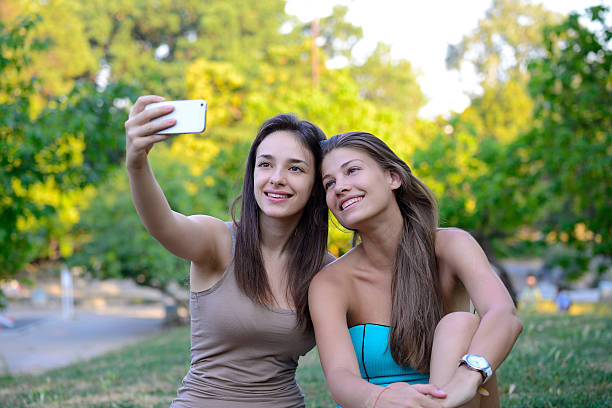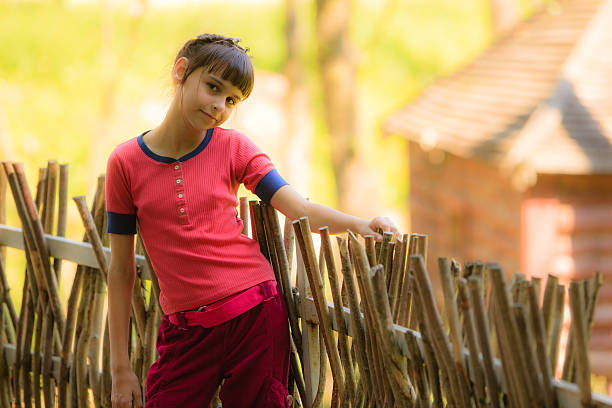There's a special kind of charm, you know, in seeing someone truly themselves. It's that feeling when you catch a moment, a real one, without any pretense or filters. This idea, this capture of genuine emotion, is something we often call "candid." And when we talk about candid teens, it's about much more than just a quick picture. It’s about the very heart of how young people show up in the world, especially with all the ways they connect and share today. It's a fascinating look at how they navigate growing up, being true to themselves, and finding their voice in a world that’s, well, very much online.
For many young people, sharing bits of their daily life, their thoughts, and their feelings is just a part of how they connect. They might be sharing a funny moment with friends, a quiet reflection, or a burst of excitement over something new. These aren't always planned, picture-perfect setups. Instead, they are often those little snippets of everyday life that feel real and relatable. It’s about capturing the unscripted, the spontaneous, and the truly personal.
This approach to sharing, where moments are caught as they happen, reflects a desire for authenticity. Young people, perhaps more than ever, seem to crave genuine connections and real interactions. They want to be seen for who they really are, not just a polished version. So, when we talk about candid teens, we're really exploring this deep desire for genuine expression and how it plays out in their lives, both online and off. It’s a pretty interesting topic, to be honest.
Table of Contents
- Understanding What "Candid" Means for Teens Today
- The Power of Genuine Expression: Why It Matters
- Ethical Considerations and Digital Citizenship
- Supporting Authentic Teen Expression
- Frequently Asked Questions About Candid Teens
- Looking Ahead: The Future of Candid Moments
Understanding What "Candid" Means for Teens Today
When we talk about "candid teens," it's easy to picture a quick photo, perhaps of someone laughing or just being themselves, you know, without posing. But for young people in this day and age, it goes a little deeper than just a snapshot. It’s about the raw, unedited bits of life they choose to share, or that happen to be part of their story. This could be anything from a spontaneous video call with friends to a heartfelt post about their day. It’s about showing up as they are, rather than putting on a show.
It’s almost like they're saying, "This is me, right now, in this moment." This kind of openness is a big part of how they interact with their peers and the world around them. It’s a very different approach from older generations, who might have been more careful about what they put out there.
The Shift in Sharing: How Teens Connect
Think about it: not so long ago, if you wanted to share a moment, you might have printed a photo or told a story face-to-face. Now, with phones almost always at the ready, capturing and sharing is, well, practically second nature. It's like that feeling when you've "had the phone camera at the ready the whole time," not to spy, but to simply document your own life or a fun gathering with friends. This quick access to recording tools means more moments are caught as they unfold, without much fuss or planning.
This readiness to share has really changed how young people connect. They might share short videos of their day, quick pictures of their outfits, or even just a voice note describing what they're up to. It's a continuous stream of their lives, shared with their chosen audience. This casual, constant sharing builds a sense of community and closeness, even across distances.
Authenticity Over Perfection: A New Trend
For a while, it seemed like everyone online was chasing perfection. Every picture had to be just right, every caption witty and flawless. But lately, there's been a noticeable shift, especially among younger crowds. There's a growing appreciation for what's real, even if it's a bit messy or unpolished. It’s like they’ve "narrowed it down to the best shots" not because they’re perfect, but because they truly represent a genuine feeling or experience.
This movement towards authenticity is a big deal. It means young people are feeling more comfortable showing their true selves, with all their quirks and honest feelings. They're less worried about looking "perfect" and more interested in being relatable and genuine. This is a very positive development, as it helps create a more accepting and real online environment. It's about connecting over shared experiences, not just curated images.
The Power of Genuine Expression: Why It Matters
When young people are able to express themselves in a truly candid way, it's not just about sharing a picture or a video. It's about something much deeper. It’s about building a sense of who they are, understanding their place in the world, and forming real bonds with others. This kind of open sharing can be incredibly empowering, helping them to feel seen and heard. It's a bit like finding your own unique rhythm in a very big dance.
This ability to be real, to show the spontaneous parts of life, helps young people develop confidence. When they share something genuine and it's met with acceptance, it reinforces the idea that who they are, just as they are, is enough. This is a crucial step in growing up and becoming a well-rounded individual.
Building Real Connections
Think about how you connect with people you truly trust. It’s often through shared moments, little jokes, or honest conversations that aren’t scripted. For candid teens, sharing their authentic selves helps them build these kinds of real, meaningful connections. When they post something that's genuinely them, it invites others to respond in kind, creating a space for true interaction.
It's not just about getting "likes" or "follows." It's about finding people who get them, who appreciate their unique perspective. This can be especially important during the teenage years, when finding your tribe feels like, well, everything. These connections can offer support, understanding, and a sense of belonging.
Finding Their Voice
Every young person is on a journey to figure out who they are and what they believe in. Expressing themselves candidly, whether through personal stories, creative projects, or just everyday observations, helps them discover their own unique voice. It's a way for them to experiment with ideas, test out opinions, and see how others react. This process is very much a part of developing their identity.
Sometimes, this expression might involve sharing a passion, like a new hobby they've picked up, or a cause they care about. Other times, it might be a reflection on a challenging experience. Each act of sharing, each moment of candidness, adds another layer to their understanding of themselves and how they want to communicate with the world. It’s quite a powerful thing, actually.
Ethical Considerations and Digital Citizenship
While the idea of candid teens and authentic expression is wonderful, it also brings up some really important questions about privacy, respect, and responsibility. In a world where sharing is so easy, it's vital to remember that not every moment needs to be captured or shared, especially if it involves others. This is where good digital citizenship comes into play. It's about being thoughtful and considerate, both when you're sharing your own story and when you're interacting with the stories of others.
There's been, in some ways, a bit of "confusion about the rules and enforcement" when it comes to what's okay to share, especially when it involves others. It’s important to make sure everyone involved feels comfortable and respected. This is a conversation we all need to have, young people and adults alike.
Respecting Privacy and Consent
One of the most important things to remember when thinking about candid moments is the idea of consent. This means getting permission before you share someone else's image or story, especially if they are young. Just because something happens "in public" doesn't automatically mean it's okay to share it widely without a second thought. For instance, if you're "been wanting to get water park candids," it's good to consider if everyone in the frame would be happy with their image being out there.
It's about empathy, really. Putting yourself in someone else's shoes and thinking about how they might feel if a moment of theirs, perhaps one they didn't even realize was being captured, suddenly appeared online. This is a fundamental part of being a good digital citizen.
The Role of Parents and Guardians
Parents and guardians have a significant part to play in helping young people understand these ethical boundaries. It’s not just about setting rules, but about having open conversations. Talking about what’s appropriate to share, what to keep private, and how to ask for permission can make a huge difference. This guidance helps teens develop a strong moral compass for their online interactions.
It’s also about modeling good behavior. If adults are always respectful of privacy and thoughtful about what they share, young people are more likely to pick up on those habits. It's a learning process for everyone, to be honest.
Setting Good Examples
For parents and anyone who interacts with young people online, setting a good example is key. This means being mindful of what you share, especially if it involves children or other family members. Always consider if the person would be comfortable with the content being public. This applies even to seemingly innocent moments.
It's a bit like when you're out and about, and you might see someone, say, a "cute curly haired teen in target," and you might think about capturing a moment. But then you realize, wait, that's a real person, and their privacy matters. It's about pausing and thinking before you act, ensuring respect is always at the forefront. This careful approach helps create a safer, more respectful online space for everyone.
Supporting Authentic Teen Expression
So, how can we truly support young people in expressing themselves authentically, in a way that’s both safe and positive? It's about creating an environment where they feel comfortable being themselves, without fear of judgment or exploitation. This involves a mix of understanding, guidance, and celebrating their unique contributions. It’s not always straightforward, but it’s really worth the effort.
This support helps them grow into confident individuals who can navigate the digital world with integrity. It’s about giving them the tools and the confidence to tell their own stories, in their own way, while also being mindful of others.
Encouraging Safe Spaces
One of the best ways to foster genuine expression is to ensure young people have safe spaces, both online and offline. These are places where they feel secure enough to share their thoughts and feelings without worrying about negative consequences. This might mean private group chats with trusted friends, or supportive family environments where open communication is encouraged.
It’s about making sure they know they have a place where they can truly be themselves, where their candid moments are appreciated for their honesty, not judged or misused. This sense of security is fundamental for any kind of true self-expression.
Fostering Digital Literacy
Teaching young people about digital literacy is more important than ever. This isn't just about knowing how to use apps; it's about understanding the implications of what they share, how their data is used, and how to protect their privacy. It’s also about recognizing problematic content and knowing how to respond to it. This knowledge empowers them to make informed choices about their online presence.
It’s like giving them a map for a very big, sometimes confusing, territory. They need to know how to read the signs, understand the risks, and find the safest paths. This helps them become responsible digital citizens who can contribute positively to online communities. You know, it's pretty essential.
Celebrating Their Unique Stories
Every young person has a unique story to tell, and celebrating these individual narratives is incredibly important. Whether it's through their art, their writing, their social media posts, or just their everyday conversations, acknowledging and valuing their perspectives helps them feel seen. This positive reinforcement encourages them to continue expressing themselves authentically.
It's about appreciating the small, candid moments that make up their lives, and recognizing the strength and creativity in their self-expression. When we truly listen and show interest, we help them understand that their voice matters. This support can really make a difference in how they perceive themselves and their place in the world.
Frequently Asked Questions About Candid Teens
Here are some common questions people often ask about young people and their authentic presence online:
How do teens express themselves authentically online?
Young people show their true selves online in many ways. They might share unedited photos and videos, post about their daily thoughts and feelings, or even create content that reflects their hobbies and passions without trying to make it look perfect. It's often about showing the real, everyday moments rather than just highly polished ones. They use platforms to connect with friends and share what's genuinely happening in their lives, rather than just what they think others want to see.
What does "candid" mean for young people today?
For young people, "candid" often means capturing or sharing moments that are natural, spontaneous, and unposed. It's about showing life as it happens, without much planning or staging. This can apply to photos, videos, or even written posts where they're just being themselves, expressing genuine emotions or reactions. It’s a move away from overly curated online personas towards a more relatable and honest representation of their experiences.
How can parents support their teen's genuine online presence?
Parents can help their teens by encouraging open conversations about online sharing and privacy. It's helpful to talk about what's appropriate to share, how to respect others' privacy, and the importance of consent. Giving them a safe space to discuss their online experiences and helping them understand digital literacy can also be very supportive. Celebrating their unique ways of expressing themselves, while gently guiding them on safety, is also quite important. Learn more about digital well-being on our site.
Looking Ahead: The Future of Candid Moments
The way young people express themselves, especially in candid ways, is always changing. As new platforms come along and technology keeps moving forward, we'll likely see even more creative and varied forms of authentic sharing. It’s a dynamic space, really. What remains constant, however, is the human desire to connect, to be understood, and to show up as one's true self. This fundamental need for genuine interaction will continue to shape how candid moments are captured and shared.
It’s a bit like a flowing river; it always finds a new path, but the water is still moving forward. Understanding and supporting this natural inclination towards authentic expression, while also teaching responsibility and respect, will be key to helping young people thrive in their digital lives. This page offers additional insights into youth culture.
The conversation around "candid teens" is not just about what they share, but how they learn to navigate a world that’s constantly asking them to define themselves. It's a chance for us all to learn, to grow, and to appreciate the real, unscripted beauty of youth.
For more information on digital ethics and online safety, you might find resources from organizations like Common Sense Media very helpful.



